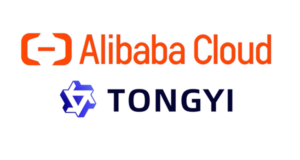 RNS: In a significant stride towards innovation, Chinese tech behemoth Alibaba introduced a cutting-edge artificial intelligence tool recently, which possesses the remarkable capability to craft images from user prompts.
RNS: In a significant stride towards innovation, Chinese tech behemoth Alibaba introduced a cutting-edge artificial intelligence tool recently, which possesses the remarkable capability to craft images from user prompts.
This AI, named Tongyi Wanxiang, promises users the ability to input prompts in both Chinese and English, prompting the AI tool to churn out images in diverse artistic styles like sketches or even 3D cartoons.
Alibaba’s cloud division rolled out this AI tool for beta testing exclusively for enterprise clients in China.
Tongyi Wanxiang arrives as the latest offering in Alibaba’s portfolio of generative AI solutions, coinciding with an escalating technological rivalry between major players in both China and the United States.
Generative AI, a subset of artificial intelligence that crafts content based on provided prompts, forms the crux of this innovation. Fueled by extensive datasets, the technology behind Tongyi Wanxiang is primed to cater to creative impulses. This concept, popularized by OpenAI’s ChatGPT, has triggered a race among the world’s technology giants to develop comparable offerings of their own.
On the American front, Google rolled out Bard, its own AI chatbot, while China responded with Baidu’s Ernie Bot and Alibaba’s Tongyi Qianwen.
Although text-to-image AI services are not new, with OpenAI’s DALL-E and Stable Diffusion serving as prominent examples, the release of Tongyi Wanxiang heralds a new era of accessibility to high-quality generative AI imagery. Alibaba Cloud Intelligence’s CTO, Jingren Zhou, emphasized the potential impact of this innovation, stating, “With the release of Tongyi Wanxiang, high-quality generative AI imagery will become more accessible, facilitating the development of innovative AI art and creative expressions for businesses across a wide range of sectors, including e-commerce, gaming, design, and advertising.”
Navigating the regulatory landscape remains a paramount concern for technology giants introducing generative AI products. In a strategic move, companies such as Alibaba and Baidu have carefully positioned their offerings to align with regulatory expectations. For instance, Alibaba is primarily catering its AI tools to the enterprise sector.
This strategic approach aligns with Chinese regulatory measures already in place in anticipation of generative AI technologies. Earlier in the year, Beijing established groundbreaking regulations governing “deep synthesis technologies,” encompassing AI-altered images and videos. Subsequently, in April, regulatory authorities unveiled draft rules aimed at overseeing the development of generative AI products by companies.
As the race for technological supremacy persists, Alibaba’s Tongyi Wanxiang stands as a testament to China’s commitment to driving the frontiers of artificial intelligence innovation, all while harmonizing with evolving regulatory frameworks. The convergence of pioneering technology and prudent regulation promises to reshape the future landscape of AI-powered creativity and expression across various industries.



